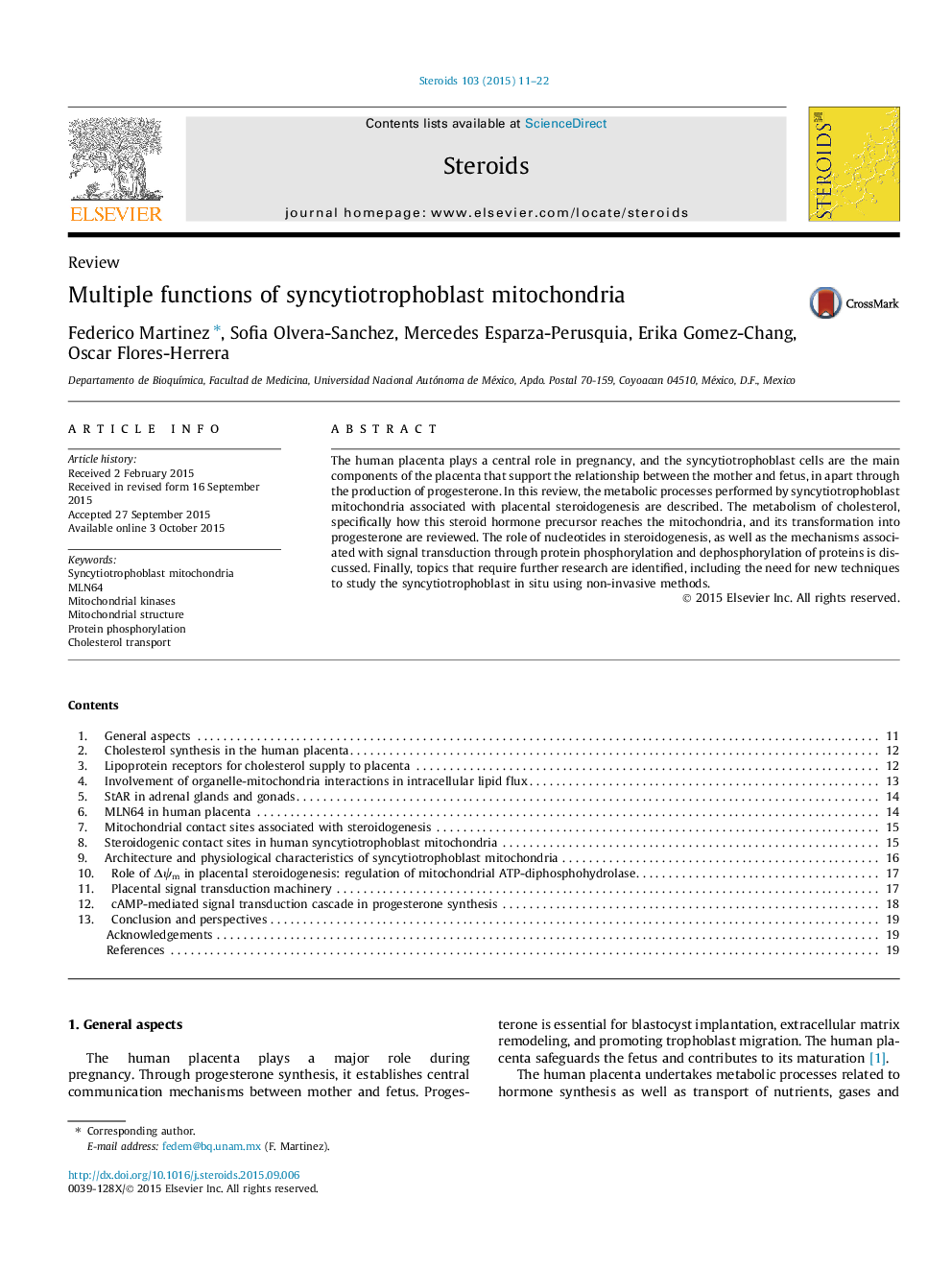| Article ID | Journal | Published Year | Pages | File Type |
|---|---|---|---|---|
| 2027776 | Steroids | 2015 | 12 Pages |
Abstract
The human placenta plays a central role in pregnancy, and the syncytiotrophoblast cells are the main components of the placenta that support the relationship between the mother and fetus, in apart through the production of progesterone. In this review, the metabolic processes performed by syncytiotrophoblast mitochondria associated with placental steroidogenesis are described. The metabolism of cholesterol, specifically how this steroid hormone precursor reaches the mitochondria, and its transformation into progesterone are reviewed. The role of nucleotides in steroidogenesis, as well as the mechanisms associated with signal transduction through protein phosphorylation and dephosphorylation of proteins is discussed. Finally, topics that require further research are identified, including the need for new techniques to study the syncytiotrophoblast in situ using non-invasive methods.
Related Topics
Life Sciences
Biochemistry, Genetics and Molecular Biology
Biochemistry
Authors
Federico Martinez, Sofia Olvera-Sanchez, Mercedes Esparza-Perusquia, Erika Gomez-Chang, Oscar Flores-Herrera,
